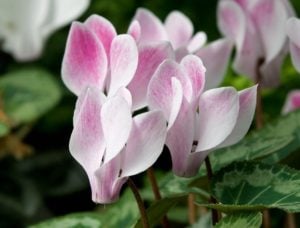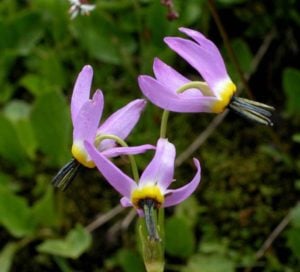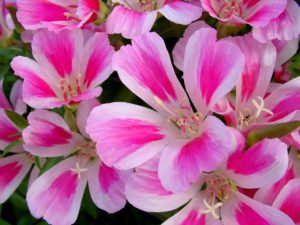Once you meet Echinacea, you will never be able to forget its exquisite bright flowers. That’s what happened to me. I saw it by chance, in the garden of a grandmother, and at the same moment decided that this flower should settle in my flower bed. And having learned from this grandmother also about the wonderful healing properties of Echinacea, I realized that I made the right decision, which I did not regret even a few years later. Now, guided by the knowledge and experience accumulated over several years, I want to share with you the secrets of growing Echinacea.
Echinacea is a flowering plant that is surprisingly bright and very decorative, large, various-colored flowers that slightly resemble a chamomile.

It is also a honey plant that will attract a lot of bees and butterflies to your garden, decorating it even more, outfits with bright colors of its flowers. Modern varieties of Echinacea are striking in their variety of color, they are not only purple, but also white, pink, yellow, crimson and even orange.
Planting Echinacea
Having planted Echinacea in your garden, please note that in the first year of life it forms only a rosette with leaves, and blooms only in the second year! Its flowering, which began in the second year after planting around mid-July, continues until mid-September.

“Growing Echinacea will not take much of your time if you immediately create the most suitable conditions for the plant that will fully meet its needs,” I read in one of the gardening magazines and decided to follow reasonable advice. I have studied everything about Echinacea: what temperatures this plant likes, what soils it grows best on, what fertilizers it needs, and so on. Having drawn the appropriate conclusions from reading in specialized publications and on the endless expanses of the Internet, I started landing.
So, we plant Echinacea only in the sun, in the shade, and even in partial shade, this heat-loving beauty will simply die. Carefully choosing a place for planting, where the plant can grow for about 5 years. Echinacea is not particularly demanding on the composition of the soil. The only thing-it does not grow well and develops on light sandy soils. The location is determined-proceed to boarding.
For planting, prepare a small pit about 5 cm (2 inch) deep at a distance of 30 cm (1 ft.). At the bottom of these holes, pour a little compost and only then plant seedlings.

If you bought an adult Echinacea, there are quite a lot of them on sale today-in small containers and pots, then you can plant it throughout the season. To do this, you need to dig a large enough hole (about 40 cm (1 ft. 4 inch) deep) and fill it with 1/3 of a mixture consisting of equal parts of sand, garden soil and compost. Echinacea, along with a clod of earth, should be carefully moved from the pot to the pit and planted at the depth at which it grew in the pot.
Reproduction of Echinacea
Needles are easily propagated by seeds. Seeds can be sown both in the open ground and in pre-prepared containers. I only saw it in the container, and you’ll find out why later.
So, we sow the seeds early enough-at the end of February, in a container with a universal land substrate, to a depth of about 0.5 cm (0.2 inch). The top of them is not covered with earth, but only a slightly protruding literally millimeter layer of ordinary sand, and then carefully wetted with sand. By the way, I forgot to mention that Echinacea is one of the few plants whose seeds germinate more easily at a temperature of about + 13 °C (55 °F).

The seeds take a long time to germinate, and the first time I was very worried, thinking that I did something wrong. But then, almost 1.5 months after sowing (which is how long it takes for the seeds of this plant to germinate), a miracle happened — tiny shoots appeared above a thin layer of sand. So, precisely because these seedlings in the first few weeks after emergence are very much in need of moisture and heat, which is easy to provide at home and impossible on the street, I do not sow Echinacea seeds in the open ground.
In early May, slightly grown seedlings need to be planted in the open ground. In the future, seedlings do not need special care, only occasionally loosen the soil around them and water them moderately.
You can also propagate Echinacea by dividing the bush, which is best produced in April. For better root formation, the plant is immersed in a liquid stimulating solution for a couple of hours.
Echinacea care
Echinacea, as I wrote above, is quite unpretentious in care, but a little attention will still have to be paid to it. First of all, it likes to water — quite profusely and preferably in the evening.

Annual application of organic and mineral fertilizers is very good for Echinacea. During the season, it is enough to feed it only twice: in the spring, about a week after planting – as soon as the plant begins to grow, as well as during budding.
In late autumn, around the end of October, all the stems should be cut and covered with a layer of ordinary dry leaves.
Diseases of Echinacea
Echinacea purpurea is not susceptible to diseases, but in rainy summers it can be found powdery mildew or rot, in which case immediately treat the plant with fungicides.
Types and varieties of Echinacea
Echinacea consists of 9 species, each of which is very beautiful.
Although in our time, most gardeners grow Echinacea paradoxus Britton and Echinacea purpurea, rightly considering them the most decorative.
Echinacea paradoxus Britton-the only one in the family who can boast of a beautiful bright yellow color.

Echinacea purpurea – the owner of spectacular large flowers, up to 12 cm (5 inch) in diameter, in the center of which rises a brownish core, similar to a dome. In Atlantic North America and Mexico, Echinacea purpurea grows massively in the wild, choosing rocky hills, fields, limestone Barrens and forests. Throughout the summer, colorful spots of Echinacea adorn the heat-faded landscapes and enliven them, filling them with brightness and even coolness.

Of the many varieties of Echinacea purpurea gardeners prefer to grow the following:
- Echinacea varieties “Cranberry Cupcake”
“Cranberry Cupcake” is one of the most beautiful Terry varieties, the flowers of which have a rich pink-purple hue.

- Echinacea varieties “The King”
Grade “The King” — one of the highest, can reach 2 m 20 cm (2 yards) in height. Although gardeners love this variety not for its “giant” height, but for its surprisingly beautiful reddish-pink flowers, which reach a diameter of 15 cm (6 inch).

- Echinacea varieties “White Swan”
Echinacea flowers of the “White Swan” variety are distinguished by a striking white color. They remind me a lot of daisies.

- Echinacea varieties of “Indica”
Echinacea Indica reaches a height of 75 cm (2 ft.) and will adorn your flower bed all summer — from June to the end of August. With their unusual shape, reed flowers can have a variety of shades-from light pink to orange-brown.

chinacea “Magnus”
Echinacea purpurea “Magnus” reaches a height of 90 cm (3 ft.) and blooms from the beginning of July to the end of September — unusual pink-crimson flowers, the Central convex part of which has a bright orange-brown color.







